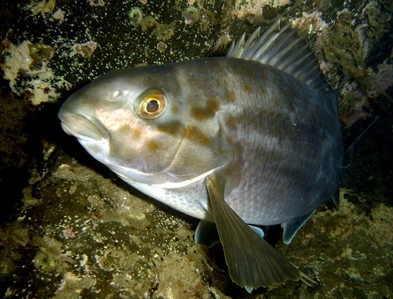General Description
A large species with a long, slender, somewhat compressed body, thick rubbery lips, and thickened lower pectoral-fin rays, some slightly elongate. Adults uniform olive-green to greyish, paler below. Juveniles deeper-bodied, silvery with rusty-coloured bars and spots above and on tail. To 1.2 m.
Biology
This commercially important species is often seen sheltering in small groups in caves and under overhangs. Juveniles are common in seagrass beds in Port Phillip Bay, Victoria.
Habitat
Sheltered and exposed coastal reefs, in caves and under overhangs, in depths of 0-50 m.
Reefs
Distribution guide
South-eastern Australia.
Species Group
Depth
Shallow (1-30 m)
Deep ( > 30 m)
Water Column
Max Size
1.2 m
Diet
Carnivore
Commercial Species
No
Global Dispersal
Native to Australia
Conservation Status
- DSE Advisory List : Not listed
- EPBC Act 1999 : Not listed
- IUCN Red List : Not listed









